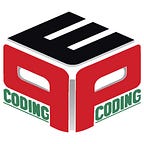Whether or not you’re familiar with software development, you must have heard the term Python. It is a popular and in demand language. According to the TIOBE Index, In 2020, Python was considered as the language of the year.
In Python, a function is a logical unit of code that consists of a series of statements that are indented and given a name using the “def” keyword.
Python functions allow you to divide a large project into smaller modules logically. The goal is to make your code easier to manage and extend.
Python supports a variety of programming techniques, including object-oriented, imperative, functional, and procedural.
Let us see an example
The “def “ command is followed by the function name and parentheses ‘()’ in Python to define a function. For example, let’s define a function with the command “def func1():” and then call it. “I am learning Python function” will be the function’s output.
Types of functions in Python
Functions of Python can be divided into two -
- Builtin functions
- User-defined functions
- Builtin function- In Python, in-built functions are built-in programmes that can be used directly. The print() function, for example, outputs that specified object to the standard output device (screen) or a text stream file.
- User defined function- Python has built-in functions like print() and others, but we may also write our own. User-defined functions are what they’re called.
What is it about Python that makes it so amazing?
Python is an enthralling programming language to learn. Developers may believe they have completed all of their tasks, only to discover that there is still more to perform. Businesses are increasingly realizing how much money they could make if they built their app in Python. Here are some of the things that make Python special:-
- Clear Syntax
- Scalable
- Versatile
Why should businesses build applications in Python?
Python programming has found its way into every industry. Developers can obtain all the help they need thanks to the programming language’s large community.
The majority of companies hire Python engineers because of the dynamic applications they can create. Python is now the most popular programming language among programmers.
Pepcoding can assist you to learn many programming languages. We also help to develop projects, technical profile creation and many more.
Source: https://www.cleveroad.com/blog/python-vs-swift
Why is Python the preferred language for beginners?
New beginnings are always exciting, be it selecting a new vehicle, joining a sports team or learning a new skill. It will always make you anxious or excited.
A similar case can be made when someone chooses to learn to code.
- It is extremely adaptable and expandable.
- It comes with a variety of testing frameworks.
- Simple to use, powerful, and adaptable
- Python is cross-platform, running on Unix, Windows 95, Linux, and Macintosh.
It is undoubtedly a perfect language to learn as a beginner. You can surely opt for the language.
Why are you waiting, then? Your time starts now!!
Code Documentation-
The collection of easy-to-understand visuals and textual descriptions that clarify what a codebase does and how it can be used is known as code documentation.
It might be as simple as explanatory comments above functions and blocks, or as comprehensive as a full-fledged developer handbook with prescriptive style dos and don’ts, overviews of each aspect of the application, and methods to the most common sorts of coding chores.
How can we let it go without introducing you to Pepcoding that can assist you in finding Python developers?
Visit our page to know more about
- Live classes,
- Personalised guidance,
- weekly assignment and projects,
- Instant 1:1 doubt resolution and many more
Check this link to know technical knowledge on Introduction to function| Module: Basics of programming|In Python
Introduction to functions | Module : Basics of programming | In English | Python | Video_1 — YouTube
